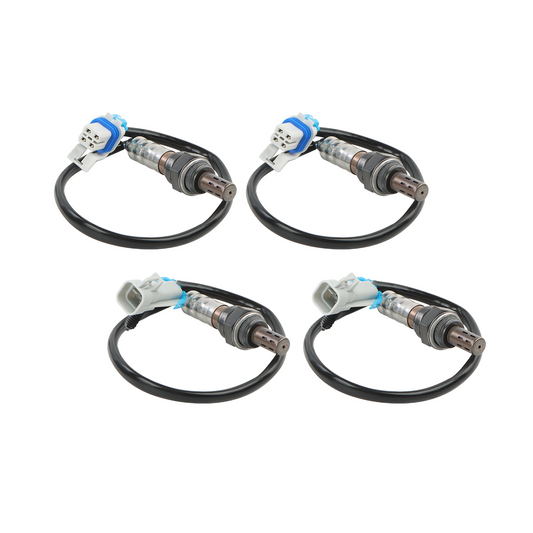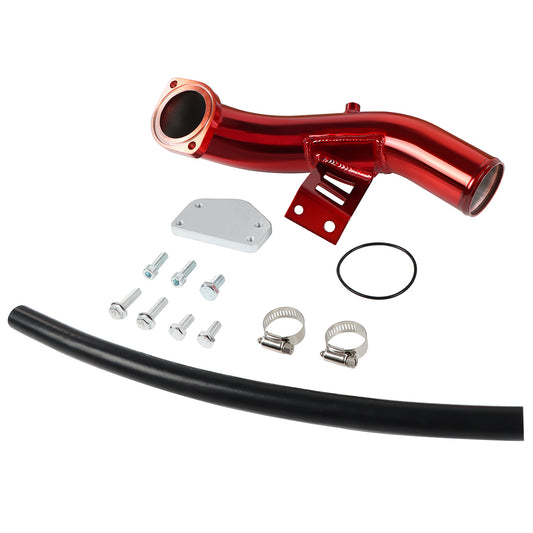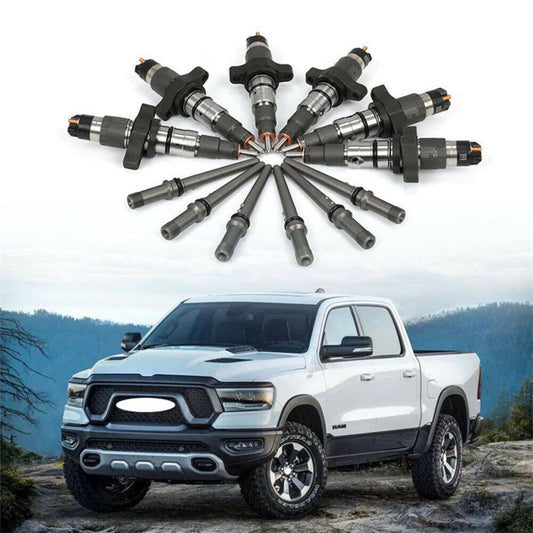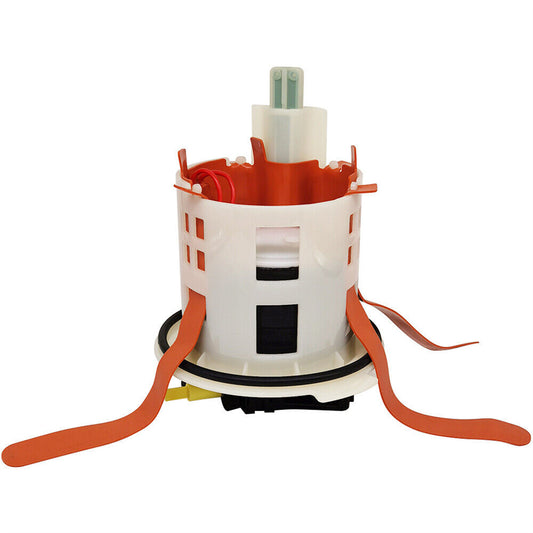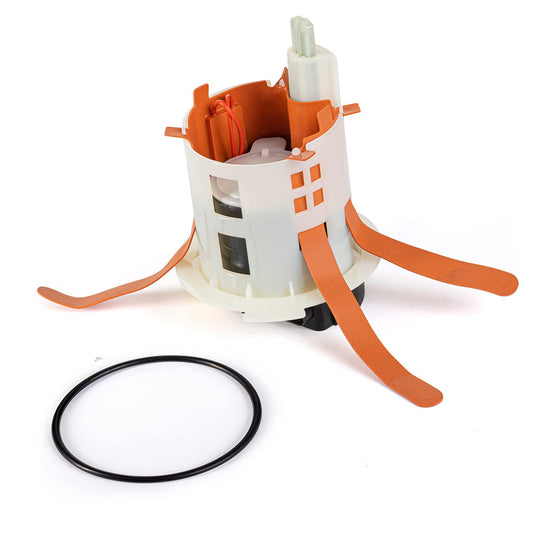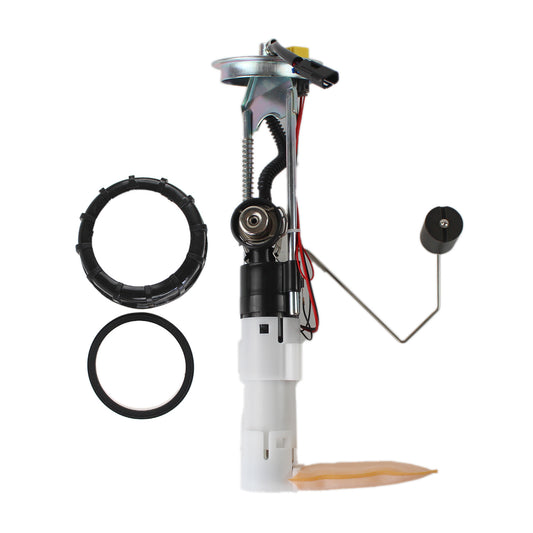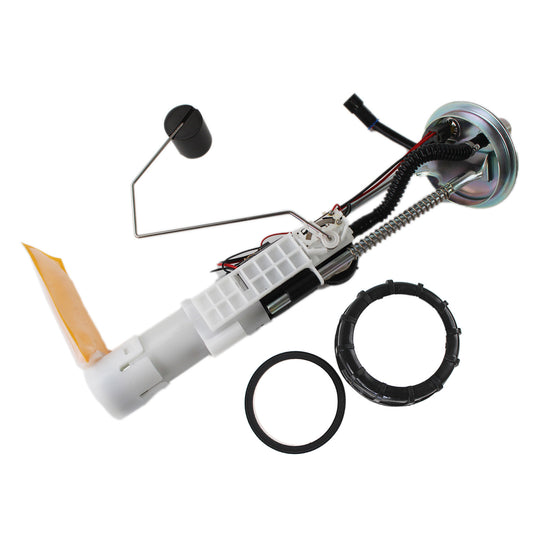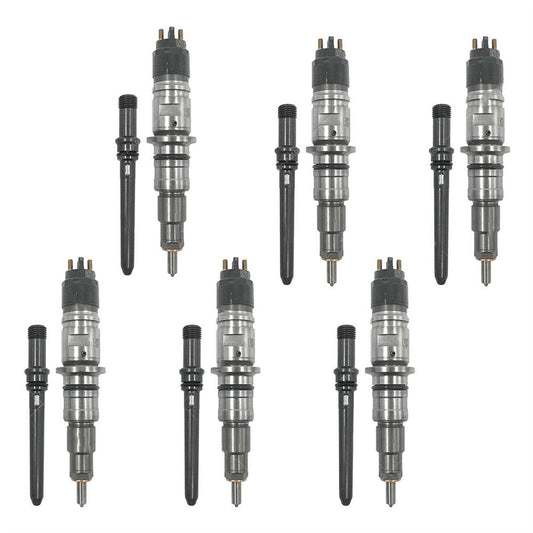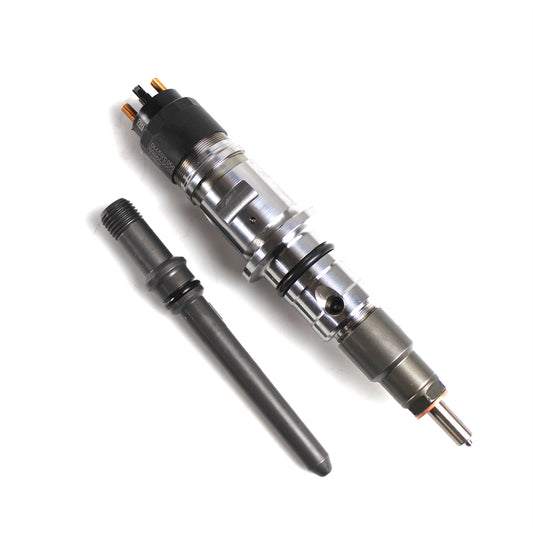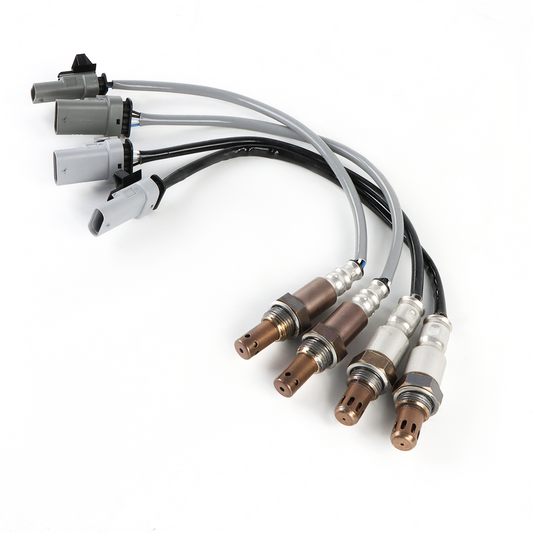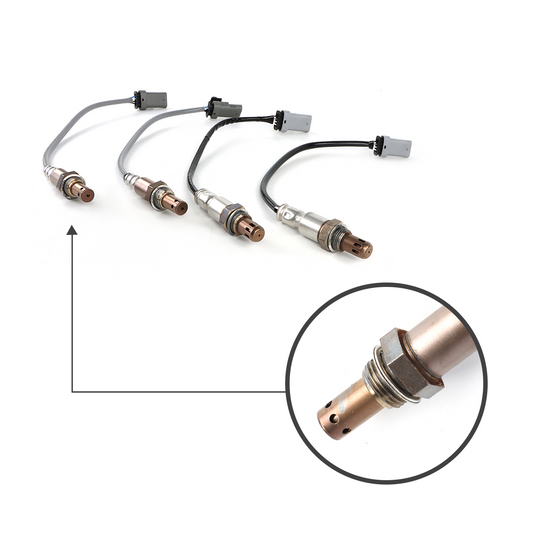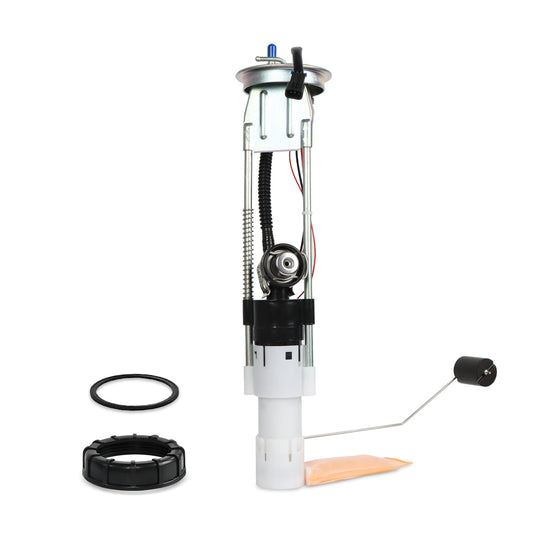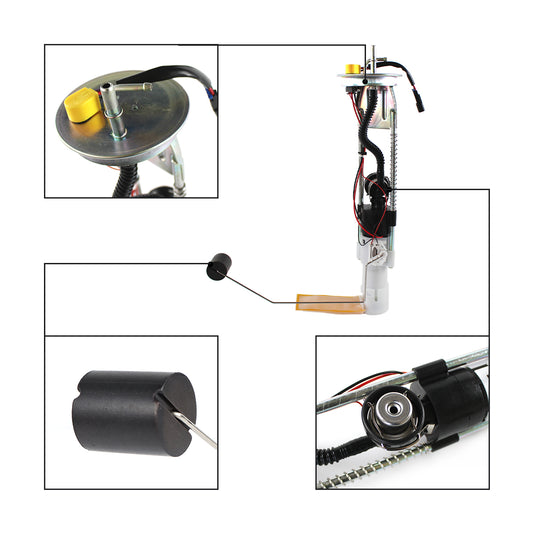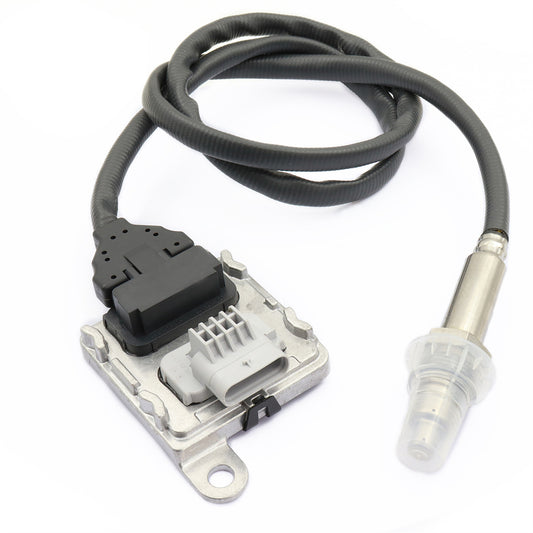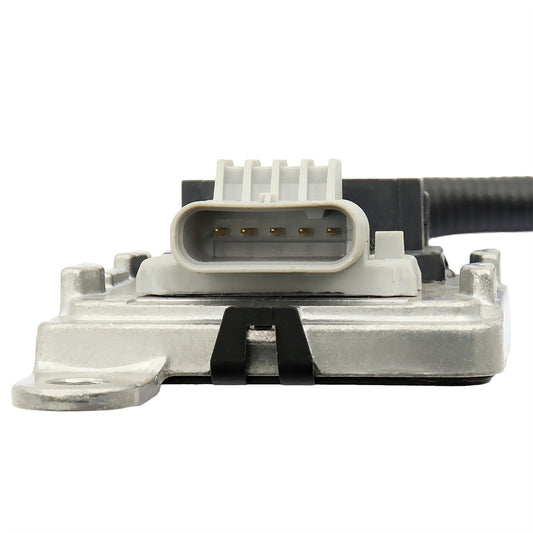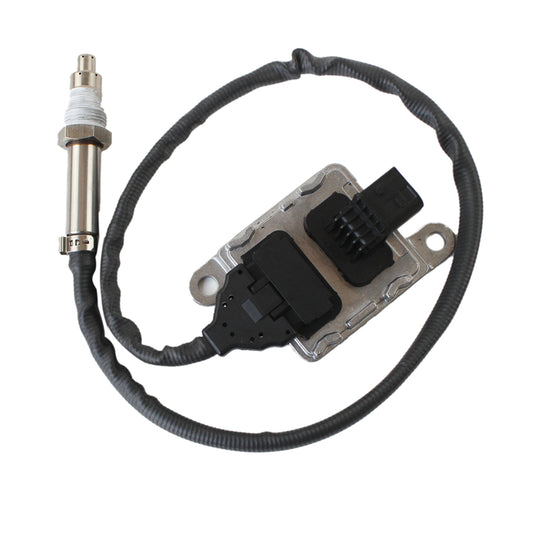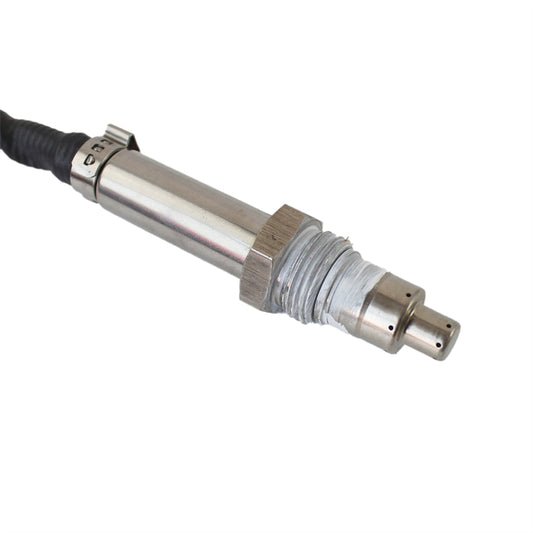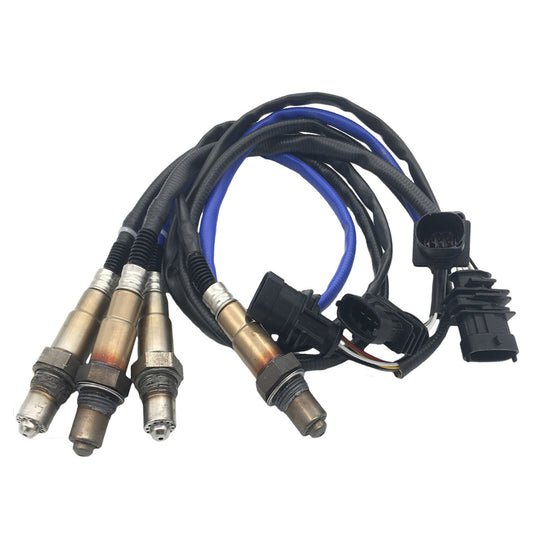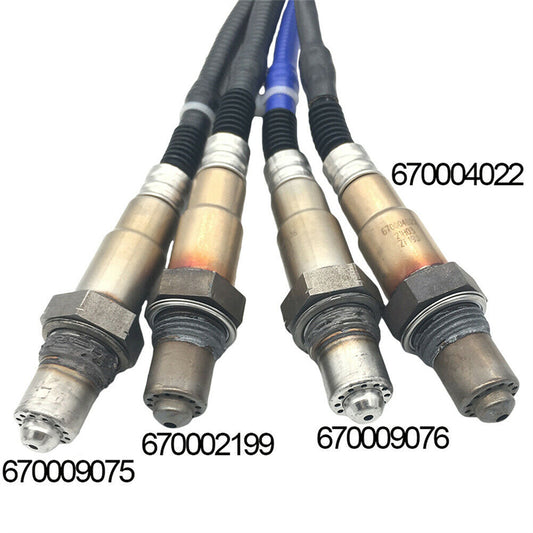Can O2 sensor cause misfire?
Many people have questions about whether oxygen sensors can cause engine fires. This article will give you the answers and tell you the signs of broken oxygen sensors, common error codes, how to fix them, and more about where to install oxygen sensors. We will also recommend where and how to buy the oxygen sensor you want.
First of all, can O2 sensor cause a misfire?
Yes, a faulty or malfunctioning oxygen (O2) sensor can potentially contribute to engine misfires. The oxygen sensor plays a crucial role in the combustion process by measuring the amount of oxygen in the exhaust gases. This information is used by the engine control module (ECM) to adjust the air-fuel mixture for optimal combustion.
If the O2 sensor is not functioning properly, it may provide inaccurate data to the ECM, leading to an improper air-fuel mixture. An incorrect mixture can result in an engine misfire, where one or more cylinders fail to ignite properly. This misfire can cause a variety of issues, including rough idling, poor acceleration, decreased fuel efficiency, and an increase in emissions.
It's essential to address O2 sensor issues promptly to prevent potential engine misfires and to maintain optimal engine performance. If you suspect a problem with your O2 sensor, it's advisable to have it diagnosed and replaced by a qualified mechanic. Regular vehicle maintenance, including monitoring and replacing O2 sensors as needed, can help ensure the proper functioning of the engine and its components.
What symptoms does a bad O2 sensor cause?
A faulty or malfunctioning oxygen (O2) sensor can cause various symptoms, and these may include:
- Check Engine Light (CEL): One of the most common indicators of a problematic O2 sensor is the illumination of the Check Engine Light on the dashboard.
- Poor Fuel Economy: A failing O2 sensor can lead to an incorrect air-fuel mixture, resulting in reduced fuel efficiency and increased fuel consumption.
- Rough Idling: An improperly functioning O2 sensor may cause irregular engine idling, leading to a rough or uneven idle.
- Engine Misfires: Incorrect air-fuel ratios due to a malfunctioning O2 sensor can contribute to engine misfires, resulting in a lack of smooth operation.
- Reduced Power and Performance: A faulty O2 sensor can impact overall engine performance, leading to reduced power, sluggish acceleration, and poor throttle response.
- Increased Emissions: If the O2 sensor is not functioning correctly, it can contribute to higher emissions levels, potentially causing the vehicle to fail emissions tests.
- Unusual Exhaust Smells: An imbalanced air-fuel mixture can lead to unusual odors in the exhaust, such as a strong smell of unburned fuel.
- Failed Emission Tests: A malfunctioning O2 sensor can result in increased emissions, causing the vehicle to fail emissions tests required for compliance with environmental regulations.
- Delayed or Harsh Shifting in Automatic Transmissions: In vehicles with automatic transmissions, a faulty O2 sensor may impact the transmission's shift timing, leading to delayed or harsh shifting.
How many O2 sensors are in a Car? Where are they?
The number of oxygen sensors in a car depends on the vehicle's make, model, and engine configuration. In general:
4-Cylinder Engine: Typically has 2 oxygen sensors – one before and one after the catalytic converter.
V6 or V8 Engine: Often equipped with 4 oxygen sensors – two before and two after the catalytic converters.
The locations are commonly referred to as:
Bank 1 Sensor 1: Before the catalytic converter on the side with cylinder 1.
Bank 1 Sensor 2: After the catalytic converter on the side with cylinder 1.
Bank 2 Sensor 1, Bank 2 Sensor 2: Applicable for V6 or V8 engines, with Bank 2 referring to the side opposite Bank 1.

What codes will a bad O2 sensor cause?
|
Error Code |
Location |
Description |
|
P0130 |
Bank 1, Sensor 1 |
Oxygen Sensor Circuit Malfunction |
|
P0131 |
Bank 1, Sensor 1 |
Oxygen Sensor Circuit Low Voltage |
|
P0132 |
Bank 1, Sensor 1 |
Oxygen Sensor Circuit High Voltage |
|
P0133 |
Bank 1, Sensor 1 |
Oxygen Sensor Slow Response |
|
P0134 |
Bank 1, Sensor 1 |
Oxygen Sensor Circuit No Activity Detected |
|
P0135 |
Bank 1, Sensor 1 |
Oxygen Sensor Heater Circuit Malfunction |
|
P0136 |
Bank 1, Sensor 2 |
Oxygen Sensor Circuit Malfunction (Sensor 2) |
|
P0137 |
Bank 1, Sensor 2 |
Oxygen Sensor Circuit Low Voltage (Sensor 2) |
|
P0138 |
Bank 1, Sensor 2 |
Oxygen Sensor Circuit High Voltage (Sensor 2) |
|
P0139 |
Bank 1, Sensor 2 |
Oxygen Sensor Slow Response (Sensor 2) |
|
P0140 |
Bank 1, Sensor 2 |
Oxygen Sensor Circuit No Activity Detected (Sensor 2) |
|
P0141 |
Bank 1, Sensor 2 |
Oxygen Sensor Heater Circuit Malfunction (Sensor 2) |
|
P0142 |
Bank 1, Sensor 3 |
Oxygen Sensor Circuit Malfunction (Sensor 3) |
|
P0143 |
Bank 1, Sensor 3 |
Oxygen Sensor Circuit Low Voltage (Sensor 3) |
|
P0144 |
Bank 1, Sensor 3 |
Oxygen Sensor Circuit High Voltage (Sensor 3) |
|
P0145 |
Bank 1, Sensor 3 |
Oxygen Sensor Slow Response (Sensor 3) |
|
P0150 |
Bank 2, Sensor 1 |
Oxygen Sensor Circuit Malfunction |
|
P0151 |
Bank 2, Sensor 1 |
Oxygen Sensor Circuit Low Voltage |
|
P0152 |
Bank 2, Sensor 1 |
Oxygen Sensor Circuit High Voltage |
|
P0153 |
Bank 2, Sensor 1 |
Oxygen Sensor Slow Response |
|
P0154 |
Bank 2, Sensor 1 |
Oxygen Sensor Circuit No Activity Detected |
|
P0155 |
Bank 2, Sensor 1 |
Oxygen Sensor Heater Circuit Malfunction |
|
P0156 |
Bank 2, Sensor 2 |
Oxygen Sensor Circuit Malfunction (Sensor 2) |
|
P0157 |
Bank 2, Sensor 2 |
Oxygen Sensor Circuit Low Voltage (Sensor 2) |
|
P0158 |
Bank 2, Sensor 2 |
Oxygen Sensor Circuit High Voltage (Sensor 2) |
|
P0159 |
Bank 2, Sensor 2 |
Oxygen Sensor Slow Response (Sensor 2) |
|
P0160 |
Bank 2, Sensor 2 |
Oxygen Sensor Circuit No Activity Detected (Sensor 2) |
|
P0161 |
Bank 2, Sensor 2 |
Oxygen Sensor Heater Circuit Malfunction (Sensor 2) |
|
P0162 |
Bank 2, Sensor 3 |
Oxygen Sensor Circuit Malfunction (Sensor 3) |
|
P0163 |
Bank 2, Sensor 3 |
Oxygen Sensor Circuit Low Voltage (Sensor 3) |
|
P0164 |
Bank 2, Sensor 3 |
Oxygen Sensor Circuit High Voltage (Sensor 3) |
|
P0165 |
Bank 2, Sensor 3 |
Oxygen Sensor Slow Response (Sensor 3) |
What should you do when the error code occurs?
- Test the wiring harness of the front oxygen sensor of the exhaust gas catalytic converter. If there is any problem, replace the front oxygen sensor with a new one.
- Check the engine control module.
- Check the fuel pressure, which should be about 2.6 bar at idle, and then check the change of fuel pressure when the speed is greater than 3500rpm at acceleration. If the fuel pressure drops (less than 2bar) and lasts for more than a few seconds, you can try to replace the fuel filter [liner blocked or deformed] or the fuel pump [insufficient output power] Most of the faults can be solved by the above methods, whether the fuel quality is good, there is no moisture and other impurities.
- Check the air flow sensor - disconnect the air flow sensor and check whether the thin condition has been corrected, if so, replace the airflow sensor.
- Check the intake system/exhaust system for leaks.
- The nozzle balance test, you can try to clean or replace the nozzle.
What does the O2 sensor replacement cost?
Single Oxygen Sensor Replacement Cost: $50 to $250 (parts and labor)
This is a general estimate, and actual costs can vary based on factors such as your vehicle's make and model, the type of sensor chosen (OEM or aftermarket), and local labor rates. For a more accurate estimate, it's best to check with a local mechanic or auto repair shop.
As an online store specializing in aftermarket auto parts, Daysyore always puts the customer first and is committed to providing quality products and sincere service. Let’s look at their hot sensor.
STAR ITEM:Daysyore Set of 4 AC Delco Oxygen O2 Sensor for 2008-2014 GM V8 4.8L 5.3L 6.0L 6.2L DC

|
Daysyore Set of 4 AC Delco Oxygen O2 Sensor for 2008-2014 GM V8 4.8L 5.3L 6.0L 6.2L DC |
|
|
Specification |
|
|
OE Number |
234-4256, 234-4668 |
|
Quantity |
4 |
|
Warranty |
12 months |
|
Year |
2008-2014 |
|
Weight |
0.5 kg |
|
Taxes |
Free |
|
After-sale Support |
Support |
|
Shipping |
Free |
|
Package |
4pc Oxygen Sensor (2x Upstream & 2 x Downstream)
|
|
Fitment |
|
|
2008-2014 Cadillac Escalade V8 6.2L 2008-2013 Chevrolet Avalanche V8 5.3L 2008-2013 Chevrolet Silverado 1500 V8 4.8L 2008-2013 Chevrolet Silverado 1500 V8 5.3L 2008-2013 Chevrolet Silverado 1500 V8 6.0L 2009-2013 Chevrolet Silverado 1500 V8 6.2L 2008-2011 Chevrolet Silverado 2500 HD V8 6.0L Pickup 2008-2011 Chevrolet Silverado 3500 HD V8 6.0L Pickup 2008-2014 Chevrolet Suburban 1500 V8 5.3L 2008-2013 Chevrolet Suburban 2500 V8 6.0L 2008-2009 Chevrolet Tahoe V8 4.8L 2008-2014 Chevrolet Tahoe V8 5.3L 2008-2014 Chevrolet Tahoe V8 6.0L 2008-2009 Chevrolet Tahoe V8 6.2L 2008-2013 GMC Sierra 1500 V8 4.8L 2008-2013 GMC Sierra 1500 V8 5.3L 2008-2013 GMC Sierra 1500 V8 6.0L 2008-2013 GMC Sierra 1500 V8 6.2L 2008-2011 GMC Sierra 2500 HD V8 6.0L Pickup 2008-2011 GMC Sierra 3500 HD V8 6.0L Pickup 2008-2013 GMC Yukon V8 4.8L 2008-2014 GMC Yukon V8 5.3L 2008-2013 GMC Yukon V8 6.0L 2008-2014 GMC Yukon V8 6.2L 2008-2014 GMC Yukon XL 1500 V8 5.3L 2008-2013 GMC Yukon XL 1500 V8 6.0L 2008-2014 GMC Yukon XL 1500 V8 6.2L 2008-2013 GMC Yukon XL 2500 V8 6.0L |
|
How to confirm the exact sensor?
Step one: Find your VIN Number and send it to us before or after purchase.
Step two: Send us your OE Number before or after purchase.
Please pay attention to the below picture.

Conclusion
Oxygen sensor damage or any other related parts damage, the impact on the car is very serious. It is vital to replace a good part. Daysyore as an auto parts online store, providing quality products and services, it can be your best choice.


